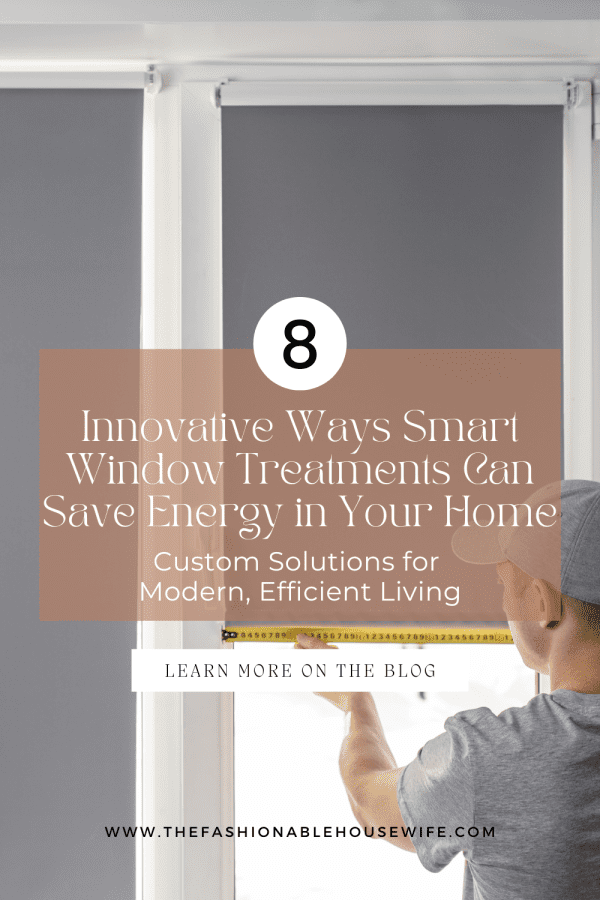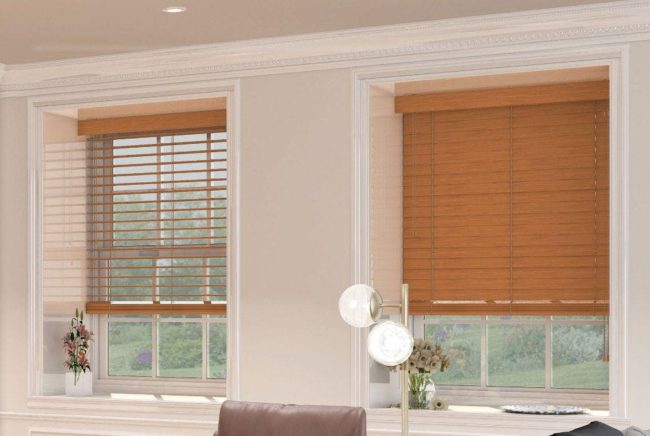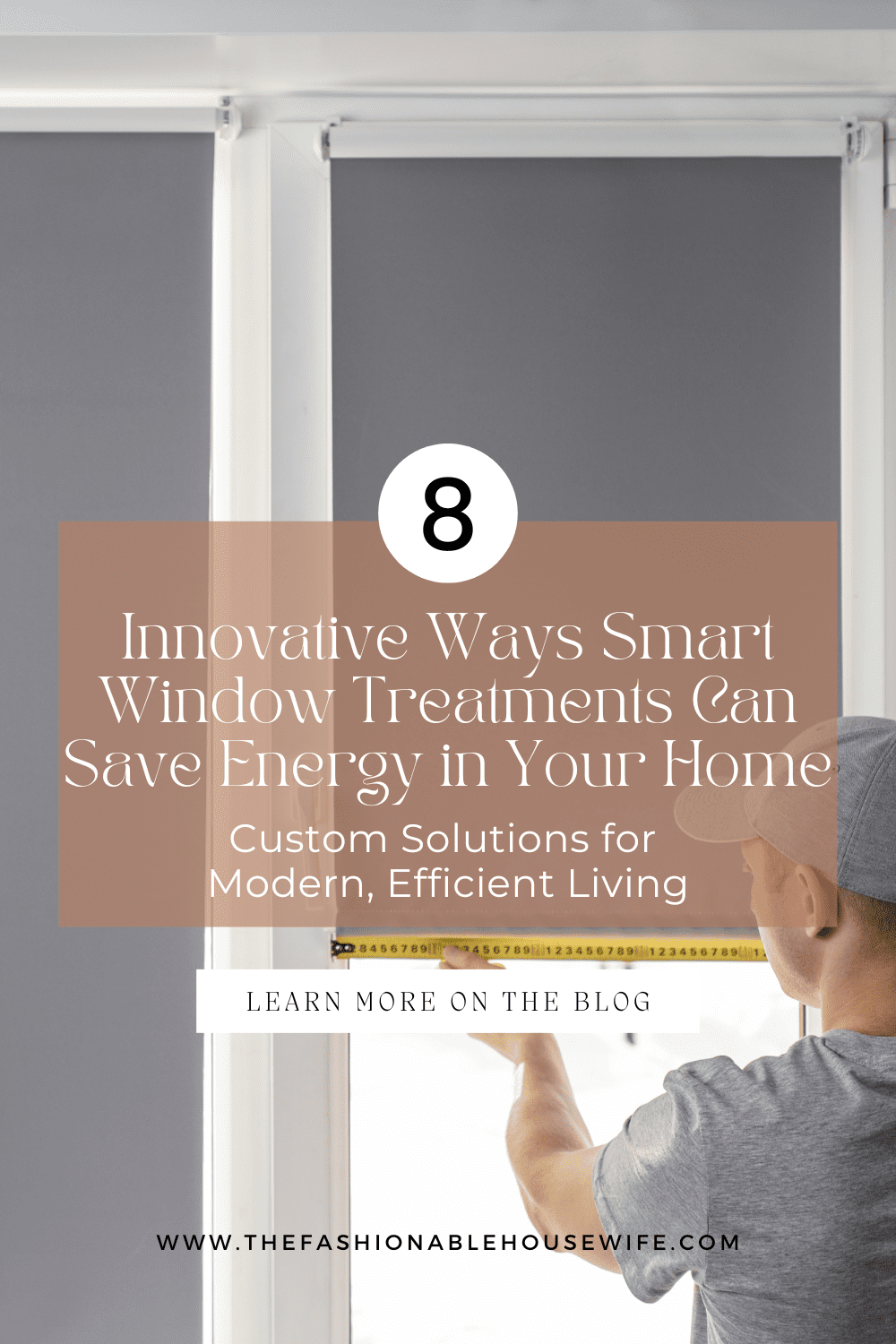8 Innovative Ways Smart Window Treatments Can Save Energy in Your Home: Custom Solutions for Modern, Efficient Living

Energy-efficient homes aren’t just good for the environment; they help us save money and make our spaces more comfortable. Many of us focus on insulation or efficient appliances, but smart window treatments are also a game-changer.
These modern shades and blinds let us control sunlight and temperature in every room. They blend technology and style in a way that fits our homes and our everyday needs.
Just a few simple changes to how we manage light and heat, and we can lower our bills without any major renovation headaches. It’s a pretty nice upgrade for modern living.
1. Tailored Energy Efficiency with Custom Blinds
Every home is unique, and off-the-shelf blinds don’t always fit windows perfectly. Custom blinds give us a snug fit, blocking gaps where air might sneak in or out.
With custom blinds, we control how much sunlight enters each room. We can manage heat gain on hot days or keep warmth in during winter, so our heating and cooling systems don’t work overtime.
Smart-compatible custom window blinds make it easy to adjust settings with schedules or remotes. We get to pick from roller, zebra, cellular, sheer, or Roman shades to match our style and save energy at the same time.
2. Automated Scheduling for Peak Efficiency
With smart shades, we can set up schedules for our window treatments. They’ll lower automatically during sunny afternoons, blocking out heat and helping with cooling costs.
On chilly mornings, we can program the shades to open and let sunlight warm things up. It’s a small thing, but it means we use less heating.
We can fine-tune the schedule to fit our daily routines. Maybe we keep the shades closed when we’re out, so rooms stay comfortable and don’t get too hot or cold.
Once we set automated timers, the guesswork is gone. Our smart window treatments quietly work in the background to manage energy every single day.
3. Integration with Smart Home Thermostats
Set up the smart window treatments to connect to our smart thermostats to let them work together. If the thermostat senses the room’s getting warmer, the shades can lower automatically to block sunlight and help keep things cool.
On colder days, the shades open up and let the sun warm our rooms. That means we don’t have to crank up the heat as much.
We don’t need to fiddle with anything; automation handles it for us. This integration saves energy and keeps our homes comfortable. Plus, controlling everything with one app or by voice is just plain convenient.
4. Solar-Powered Smart Shades
Solar-powered smart shades use small solar panels to gather energy from sunlight. This energy powers the motorized system, so we don’t need to plug them in or use our home’s electricity.
Solar-powered options help us cut our overall energy use. The shades run on sunlight, so our electricity bills stay lower.
We can connect solar-powered shades with popular smart home systems. Timers, schedules, or voice control are easy to set up for roller, cellular, or Roman styles.
These shades are perfect for rooms that get lots of sun. When we use the sun to power our shades, we reduce our reliance on traditional energy sources and make our homes a bit more efficient.
5. Real-Time Weather Adaptation
Smart window treatments can react to real-time weather data. If the temperature suddenly spikes or drops, our shades adjust on their own.
We connect them to weather updates through Wi-Fi. When the sun’s blazing, the shades lower. When it’s cloudy or cold, they open up for warmth.
Roller, zebra, or cellular styles all work well with smart home setups. We get comfort, convenience, and a little extra money in our pockets from lower energy use.
6. Enhanced Insulation with Cellular Shades
Cellular smart shades give us more than a modern look—they help us save energy. Their honeycomb design traps air, adding a layer of insulation right at the window.
During winter, cellular shades reduce heat loss. In summer, they keep cool air inside. That means less work for our heating and cooling systems.
We can control them with smart systems and schedule them to open or close at just the right times. It’s comfort and style without wasting energy.
Custom options let us pick sizes and colors that fit our homes. We get efficiency, but we don’t have to sacrifice the look we want.
7. Daylight Harvesting Technology
Daylight harvesting uses sensors to measure sunlight in our rooms. With smart window treatments, these sensors tell shades when to open or close based on how bright it is outside.
If there’s enough natural light, the shades open wider, so we use less artificial lighting. On really bright days, they close a bit to cut glare but still let in daylight.
This helps us avoid turning on extra lights or dealing with harsh sun. The shades react on their own, so we don’t have to adjust anything.
Daylight harvesting works with roller, cellular, or zebra smart shades. It’s a handy way to combine style, convenience, and energy savings.
8. Smart Sensors for Occupancy Detection
Smart sensors let our window treatments respond automatically when someone enters or leaves a room. Motion sensors work with our blinds or shades to adjust their position based on real-time activity.
If a room is empty, the system can close the shades to block sunlight and keep things from heating up. This is great for spaces where we forget to adjust the blinds.
When we walk in, the sensors open the shades to let in light or keep things comfortable. We only use energy for heating or cooling rooms that are actually in use.
Smart sensor tech pairs well with roller, zebra, cellular, sheer, and Roman shades. It helps us keep things comfy and avoids wasting energy.

Frequently Asked Questions
We all want our homes to look good and stay comfortable, but saving on energy bills matters too. The right smart window treatments help us manage heat, light, and insulation in simple, effective ways.
What types of smart window treatments offer the highest energy efficiency year-round?
Automated cellular shades and dual-layer smart roller shades usually offer the best energy efficiency all year. Insulated cellular shades trap air, so they cut heat loss in winter and block heat in summer.
Solar-powered smart shades adjust to sunlight and save electricity. Smart Roman and zebra blinds let us customize light control throughout the day.
Can installing insulated cellular shades significantly reduce heating and cooling costs?
Yes, insulated cellular shades can lower heating and cooling costs by making windows more efficient. The honeycomb design traps air and helps prevent drafts in winter and keeps cool air in during summer.
Savings depend on window size, local climate, and shade quality, but many of us notice a difference.
How do smart window treatments integrate with home automation systems for optimal energy saving?
Most smart window treatments work with Google Home, Amazon Alexa, or Apple HomeKit. We can connect window coverings to smart thermostats and set schedules based on the time of day or real-time weather.
These integrations let us automate openings, closings, and they adjust in response to temperature changes, so we have better control over energy use.
What options exist for cost-effective window treatments that block heat and maintain interior temperature?
Budget-friendly options include smart roller shades with blackout or solar-reflective fabrics. Some people use layered curtains with thermal linings for extra insulation.
DIY window films or removable insulating panels can help manage heat, though they’re not as advanced as full smart systems.
Are there any tax credits or incentives available for installing energy-efficient blinds or shades?
Some regions offer tax incentives for upgrading to energy-efficient window treatments, especially if they meet certain insulation or solar heat control standards. It’s worth checking local regulations or talking to a tax professional to see if we qualify.
Federal and state programs often focus on improvements that reduce total energy use.
What are the comparative benefits of various energy-efficient window coverings, such as roller and Roman shades?
Cellular shades stand out for insulation and temperature control. They trap air in pockets, which helps keep rooms comfortable.
Roller shades, especially when you go for solar or blackout materials, cut down on glare and heat. Still, they don’t insulate quite as well as cellular options.
Roman shades bring style to the table. If you add a lining, they can block some heat, but honestly, they don’t match cellular shades for insulation.
Every style offers its own mix of energy savings, looks, and ways to customize. It’s a bit of a trade-off—what matters most to you?

